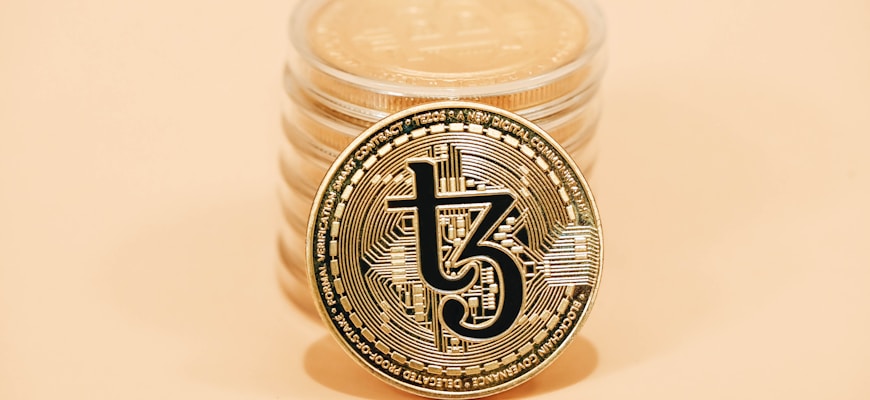The Role of NFTs in Expanding Blockchain Use Cases

- Understanding the Basics of NFTs and Blockchain Technology
- Exploring the Influence of NFTs on Digital Art and Collectibles
- The Evolution of NFTs from Gaming to Real Estate
- NFTs as a Tool for Ensuring Ownership and Authenticity
- Challenges and Opportunities in the NFT Ecosystem
- The Future of Blockchain Technology with the Integration of NFTs
Understanding the Basics of NFTs and Blockchain Technology
Blockchain technology is the foundation on which NFTs are built. A non-fungible token (NFT) is a unique digital asset that is stored on a blockchain. Unlike cryptocurrencies such as Bitcoin or Ethereum, which are fungible and can be exchanged on a one-to-one basis, NFTs are indivisible and cannot be exchanged for an identical token.
NFTs have gained popularity in recent years due to their ability to represent ownership of digital assets such as art, collectibles, and even virtual real estate. These tokens are created and verified using blockchain technology, which ensures their authenticity and prevents them from being duplicated or counterfeited.
Blockchain technology, on the other hand, is a decentralized and transparent ledger that records transactions across a network of computers. Each transaction is verified by a network of nodes, making it nearly impossible to alter or tamper with the data. This immutability and security make blockchain an ideal technology for storing and verifying ownership of NFTs.
By understanding the basics of NFTs and blockchain technology, individuals can grasp the potential for innovation and expansion in various industries. From art and gaming to real estate and finance, NFTs have the power to revolutionize how assets are bought, sold, and traded in the digital world.
As more industries adopt blockchain technology and NFTs, the possibilities for use cases will continue to expand. This intersection of technology and creativity has the potential to reshape the way we think about ownership and value in the digital age. Whether you are an artist looking to monetize your work or a collector seeking to own a piece of digital history, NFTs offer a new frontier for exploration and investment.
Exploring the Influence of NFTs on Digital Art and Collectibles
NFTs have been making waves in the world of digital art and collectibles, revolutionizing the way artists and creators can monetize their work. By leveraging blockchain technology, NFTs provide a unique way to verify ownership and authenticity, allowing for a new level of transparency and security in the art market.
One of the key advantages of NFTs is their ability to create scarcity in the digital realm. This scarcity is achieved through the use of smart contracts, which ensure that each NFT is unique and cannot be replicated or divided. This has opened up new opportunities for artists to create limited edition pieces and offer them directly to collectors, bypassing traditional galleries and auction houses.
Furthermore, NFTs have the potential to democratize the art world by allowing artists to reach a global audience without the need for intermediaries. This direct connection between creators and collectors can help artists retain more control over their work and receive fair compensation for their efforts. Additionally, NFTs can enable artists to receive royalties every time their work is sold or traded, ensuring a continuous stream of income.
Overall, the influence of NFTs on digital art and collectibles is undeniable. As more artists and collectors embrace this technology, we can expect to see a shift in the way art is created, sold, and collected. By exploring the potential of NFTs, we can unlock new possibilities for the future of the art market and beyond.
The Evolution of NFTs from Gaming to Real Estate
NFTs have come a long way from their origins in the gaming industry to finding applications in real estate. Initially, non-fungible tokens gained popularity in the gaming world as a way to represent ownership of in-game items and digital collectibles. As the technology evolved, NFTs started to attract interest from other sectors, including art, music, and real estate.
Real estate is an industry that traditionally relies on physical documents to prove ownership of properties. However, with the introduction of blockchain technology and NFTs, the process of buying, selling, and transferring real estate assets is becoming more streamlined and secure. NFTs can represent ownership of properties, allowing for fractional ownership and easier transfer of assets.
By tokenizing real estate assets, property owners can unlock new opportunities for liquidity and investment. NFTs enable fractional ownership, meaning that multiple investors can own a share of a property without the need for traditional paperwork. This opens up the real estate market to a wider range of investors, including those who may not have had access to property investment before.
The use of NFTs in real estate also brings transparency to transactions, as all ownership records are stored on the blockchain and cannot be altered. This eliminates the risk of fraud and ensures that ownership information is secure and accessible to all parties involved in a transaction. Additionally, smart contracts can be used to automate certain aspects of real estate transactions, such as rent payments or property management.
Overall, the evolution of NFTs from gaming to real estate signifies a shift towards a more digitized and efficient way of managing assets. As blockchain technology continues to advance, the potential applications of NFTs in various industries, including real estate, are limitless. The use of NFTs in real estate has the potential to revolutionize the way properties are bought, sold, and managed in the future.
NFTs as a Tool for Ensuring Ownership and Authenticity
NFTs serve as a revolutionary tool for ensuring ownership and authenticity in the digital world. By leveraging blockchain technology, NFTs provide a unique and secure way to certify the ownership of digital assets. This eliminates the risk of duplication or fraud, giving creators and buyers peace of mind that they are dealing with original and legitimate items.
One of the key advantages of using NFTs is their ability to create a verifiable chain of ownership for any digital asset. Each NFT is minted with a unique identifier that is stored on the blockchain, making it impossible to counterfeit or tamper with. This transparency and immutability make NFTs a reliable solution for proving ownership and authenticity.
Furthermore, NFTs have the potential to revolutionize the way we perceive and trade digital assets. With traditional digital files, ownership is often unclear, leading to disputes and uncertainties. NFTs provide a clear and irrefutable proof of ownership, allowing creators to monetize their work confidently and buyers to invest in unique and valuable assets.
Challenges and Opportunities in the NFT Ecosystem
As the NFT ecosystem continues to grow, several challenges and opportunities are emerging that are shaping the future of this technology. One of the main challenges facing NFTs is the issue of scalability. With the increasing popularity of NFTs, the current blockchain networks are struggling to handle the high volume of transactions, leading to congestion and high fees. This scalability issue needs to be addressed to ensure the long-term viability of NFTs.
Another challenge is the issue of interoperability. NFTs are currently fragmented across different blockchain networks, making it difficult for users to trade or transfer assets between platforms. Interoperability solutions are being developed to bridge this gap and create a more seamless experience for NFT holders.
Despite these challenges, there are also many opportunities for growth in the NFT ecosystem. One of the main opportunities is the potential for NFTs to revolutionize various industries, such as art, gaming, and real estate. NFTs can provide artists, developers, and content creators with new ways to monetize their work and engage with their audiences.
Additionally, NFTs have the potential to democratize access to assets and investments. By tokenizing real-world assets, such as real estate or collectibles, NFTs can make these assets more accessible to a wider range of investors. This can help to reduce barriers to entry and increase financial inclusion.
The Future of Blockchain Technology with the Integration of NFTs
The integration of Non-Fungible Tokens (NFTs) into blockchain technology has opened up a world of possibilities for the future. NFTs are unique digital assets that represent ownership of a particular item or piece of content, whether it be art, music, collectibles, or even virtual real estate. By leveraging blockchain technology, NFTs provide a secure and transparent way to buy, sell, and trade these digital assets.
One of the main advantages of NFTs is their ability to create scarcity and provenance in the digital world. This has led to a surge in interest from artists, musicians, and creators looking to monetize their work in a new and innovative way. Additionally, the use of smart contracts in NFT transactions ensures that creators receive royalties every time their work is resold, providing a sustainable source of income.
Looking ahead, the future of blockchain technology with the integration of NFTs is promising. As more industries and individuals adopt NFTs, we can expect to see new use cases emerge, from ticketing and gaming to real estate and identity verification. The decentralized nature of blockchain ensures that NFTs are tamper-proof and cannot be duplicated, providing a level of trust and security that is unparalleled in the digital world.
